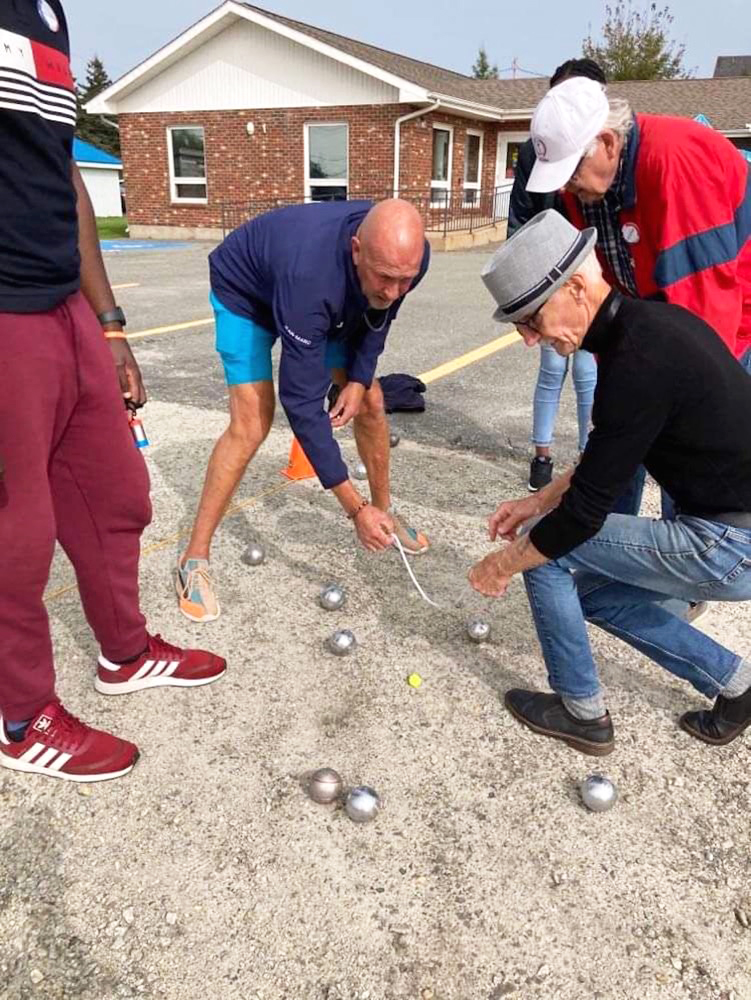
In 2018, Alain-Philippe Girard was at a dinner hosted by the Municipality of Clare and was asking some of the local officials if anyone had heard of the sport of petanque, which he had grown up playing.
“Someone had mentioned that someone had moved here several months ago and had asked the same thing,” said Girard. “So we got together, bought some equipment and started playing.”
And so La Boule Acadienne was born. Girard, the vice-president of the club, has been involved since its formation in 2019.
Petanque, which has its roots in southern France but can be traced to ancient Roman and Greek cultures, is similar to lawn bowling or bocce. Teams of up to three players apiece try to score points by throwing boules (balls) toward a smaller ball, called a jack.
You don’t have to have a background in sports to play,” said Girard. “There are a few rules you have to follow, but they’re not that difficult. Anyone from the young to the old can play.”
Games can be played indoors or outdoors, with lighter boules used for indoor competition to avoid damaging playing surfaces. Outdoor boules are hollow and made of metal, with a diameter of 70 to 80 millimetres, and weigh 700 to 800 grams. The jack is 30 mm in diameter and made of wood, usually painted in a bright colour. Traditional games are played in a 15-metre long by four-metre wide space. In petanque, players throw while standing in a circle which measures from 35 to 50 centimetres in diameter. Games consist of several ends.
A coin toss is held to start the game, with the winning team placing the circle and throwing the jack, followed by that team’s first boule, then the first boule from the opposing team. Boules can be thrown in any manner, but the traditional method is to hold the boule with the palm of the hand facing down, then to throw with an underarm swing, ending with a flick of the wrist to put backspin on the boule for greater control and flexibility.
From this point, the team whose boule is closest to the jack is referred to as “holding the point,” and the opposing team throws the next boule. A team’s turn ends upon either gaining the point or running out of boules. Once one team runs out, the other throws all of its remaining boules.
After both teams have thrown all of their boules, the team with the boule closest to the jack wins the end. The winning team is awarded one point for each of its boules that is closer than their opponents’ closest boule.
Teams are permitted to use their boules to try and knock their opponents boules further away from the jack or even out of bounds. If the jack is knocked out of bounds, the end is considered complete and no team is awarded points. Ends continue until one team has earned 13 points, with that team declared the winner.
Girard said the club has organized workshops at local schools and seniors residences to introduce the sport to all ages. The club plays outdoors during the spring, summer and fall, and indoors in the winter, usually two to three times per month, and has organized several tournaments with local sponsors offering prizes to winners.
“We are working to grow the game and that’s why we are building our relationship with Sport Nova Scotia because we need their help,” said Girard. “We see the growth of sports like pickleball in the province and we think our sport has that same level of potential.
“We introduce the sport to young people who probably didn’t know that much about it and hopefully as they grow into adults, some of them might be able to pass the game on to their children. With the seniors, we had people playing the game who were in wheelchairs and they were able to adjust to it very quickly. They were very grateful to be included in that and it helped keep them active.”





